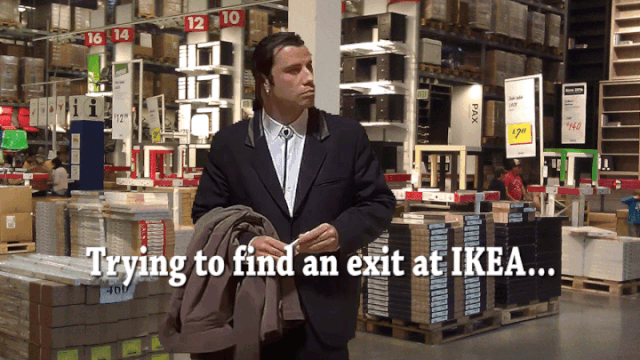BY: HANNAH MONKMAN
Hello and welcome to round two of Beyond Tradition! In our last episode, Emily grappled with defining what exactly constitutes a museum. She concluded with her definition focusing on the educational aspect of museums—an aspect I agree with. But from the visitor’s perspective, is the potential for informal learning a motivation (or even an outcome) in their experience at the museum?
With this question in mind, I want to push the boundaries even further and look at some museum practices that we can find outside of places we might usually consider to be centres of informal learning: specifically, department stores.
Now you might be thinking: “Hannah, department stores definitely aren’t museums. So why are you comparing them?”
To which I might respond, “Why aren’t they considered museums?”
If you look at stores like IKEA, the layout (and the customer experience) looks pretty similar to a typical visitor experience in a museum. The customer explores through carefully curated exhibits, can stop at an in-house restaurant if they get hungry, and pass through a store on the way out that features items related to the exhibits they just experienced.
While it can be argued that this is not “educational,” we should then be asking, “educational for whom?”
 |
| In other ways, IKEA could also be compared to the Ontario Science Centre, notorious for being difficult to navigate for first-time visitors. Source. |
While it can be argued that this is not “educational,” we should then be asking, “educational for whom?”
An interior decorator may find inspiration from an IKEA exhibit just as an artist may be illuminated by a trip to the AGO. A fashion designer may explore Nordstrom just as a historian travels through the ROM. Although the content in museums is typically subjected to interpretation, the question of audience is always a driving factor in interpretive decisions on both sides – from lighting choices to paint colours, from considering how people move in the space to how the overall aesthetic will impact the experience, the visitor is typically first and foremost (perhaps only second to the safety of the more delicate artifacts – or more expensive merchandise).
Department stores can be further compared to commercial art galleries with regards to their "collections." After all, is fashion not a subset of contemporary art? Museums with textile collections will display garments spanning all of history, and art galleries may sell pieces displayed in their show – both the practices of selling the art and displaying it for aesthetic purposes are found in department stores. Does the act of selling the collection itself deny the institution the right to call itself a museum? But then, in some ways, a department store might be more similar to a gift shop in an art museum than a commercial art gallery in that it sells reproductions of the pieces rather than the originals.
In addition to all of this, there has been movement within museums to focus less on the inherent value of the objects and more on the visitor experience. Conducting visitor research has helped museum professionals to identify why people come to museums and how they behave once they’re there. Analogous to this has been a trend in some retail stores, notably Nordstrom, to focus their efforts on creating memorable customer experiences with exceptional service rather than purely advertising their products.
 |
| Every visitor will have a unique experience – what one person walks past might have a huge impact on someone else. Source. |
While I don't truly think that department stores are museums (or should be defined as such), I believe that we can strengthen our understanding of what a museum can be by looking at what a museum is not. If we look beyond the limits of what we understand a museum to be, we can find cases that mirror our own practices and may benefit the field of museum studies as we consider a more multidisciplinary approach.



No comments:
Post a Comment
Note: only a member of this blog may post a comment.